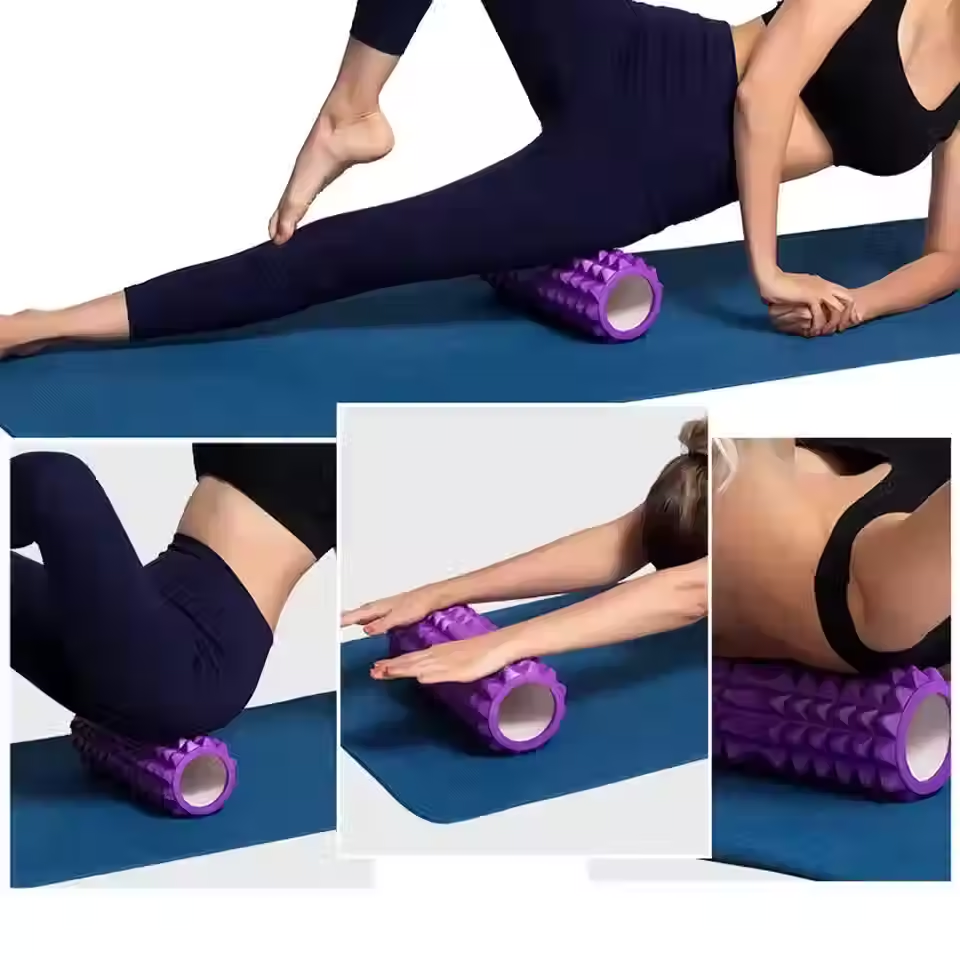Foam Rolling 101
- Dave Lucciano

- Nov 11
- 3 min read
How to Relieve Muscle Soreness
If you've ever experienced tight, achy muscles after a workout or long day on your feet, foam rolling might be your new best friend. This simple self-massage technique has become a staple in gyms and physical therapy clinics worldwide, offering an accessible way to ease muscle tension, improve flexibility, and speed up recovery. Here's everything you need to know to get started.
What Is Foam Rolling?
Foam rolling is a form of self-myofascial release—essentially a DIY massage that targets the fascia, the connective tissue surrounding your muscles. When you exercise or sit for extended periods, this fascia can become tight and develop adhesions or "knots." Rolling over these areas with a cylindrical foam roller applies pressure that helps break up tension, increase blood flow, and promote healing.
The benefits extend beyond just feeling good. Research suggests foam rolling can reduce muscle soreness, improve range of motion, and enhance overall athletic performance when incorporated into a regular routine. It's particularly effective when used after workouts or on rest days to aid recovery.
Choosing Your Foam Roller
Foam rollers come in various densities and textures. Beginners should start with a softer roller, as firmer options can be intense if you're not accustomed to the pressure. As your tolerance builds, you can progress to denser rollers or textured versions with ridges that provide deeper tissue work. Standard rollers are 36 inches long, though shorter travel-sized options are available.
The Basic Technique
The fundamental principle is simple: slowly roll your body weight over the foam roller, pausing on tender spots for 20-30 seconds. However, proper technique matters. Roll slowly—about one inch per second—to allow the fascia time to release. When you find a particularly tight area, hold steady pressure rather than rolling back and forth aggressively.
Breathe deeply throughout the process. Tension often increases when we hold our breath, counteracting the relaxation we're trying to achieve. The sensation should be uncomfortable but tolerable—think of it as "good pain," not sharp or shooting pain. If an area feels extremely painful, lighten the pressure by supporting more of your weight with your hands or feet.
What to Avoid
Never roll directly over joints, bones, or your lower back. The spine isn't designed for this type of compression, and rolling the lumbar region can cause injury. Also avoid rolling acute injuries, bruises, or inflamed areas. If you have circulatory issues or nerve conditions, consult a healthcare provider before foam rolling.
Sample Foam Rolling Routine
This 10-minute routine targets major muscle groups prone to tightness. Perform each movement for 30-60 seconds per side.
Calves: Sit with the roller under one calf, other leg crossed on top for added pressure. Roll from ankle to just below the knee. Rotate your leg inward and outward to hit different angles.
Hamstrings: Sit with the roller under your thighs, hands supporting you behind. Roll from just above the knee to below your glutes. For increased intensity, roll one leg at a time.
Quadriceps: Lie face-down with the roller under your thighs. Use your forearms to move your body forward and back, rolling from hip to just above the knee. This position allows significant pressure on these large muscles.
IT Band: Lie on your side with the roller positioned between your hip and knee along the outer thigh. This notoriously tight area may be tender, so control pressure by placing your top leg on the ground for support.
Glutes: Sit on the roller with one ankle crossed over the opposite knee. Lean toward the crossed leg side to target the gluteal muscles, rolling in small movements.
Upper Back: Lie face-up with the roller under your upper back, knees bent, feet flat. Cross your arms over your chest and gently roll from mid-back to shoulders, keeping your core engaged to protect your lower back.
Making It a Habit
Consistency beats intensity with foam rolling. Even five minutes daily can make a noticeable difference. Consider rolling while watching TV or as part of your post-workout cooldown. Your muscles—and your future self—will thank you for the investment in recovery and mobility.





Comments